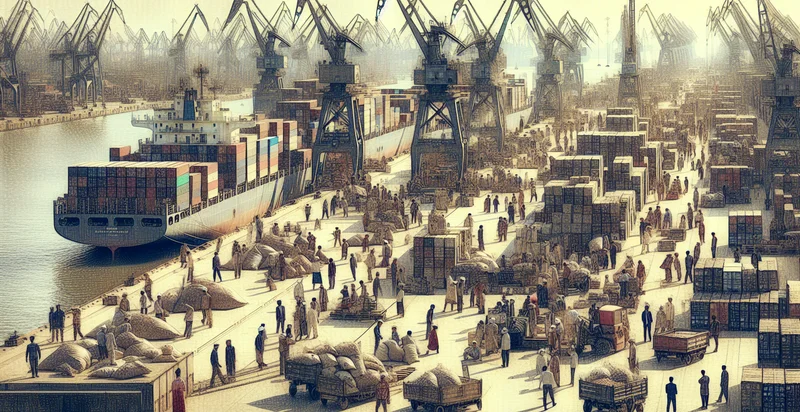Identify how many dock workers there are
using AI
Below is a free classifier to identify how many dock workers there are. Just upload your image, and our AI will predict how many dock workers there are - in just seconds.

Contact us for API access
Or, use Nyckel to build highly-accurate custom classifiers in just minutes. No PhD required.
Get started
import nyckel
credentials = nyckel.Credentials("YOUR_CLIENT_ID", "YOUR_CLIENT_SECRET")
nyckel.invoke("how-many-dock-workers-there-are", "your_image_url", credentials)
fetch('https://www.nyckel.com/v1/functions/how-many-dock-workers-there-are/invoke', {
method: 'POST',
headers: {
'Authorization': 'Bearer ' + 'YOUR_BEARER_TOKEN',
'Content-Type': 'application/json',
},
body: JSON.stringify(
{"data": "your_image_url"}
)
})
.then(response => response.json())
.then(data => console.log(data));
curl -X POST \
-H "Content-Type: application/json" \
-H "Authorization: Bearer YOUR_BEARER_TOKEN" \
-d '{"data": "your_image_url"}' \
https://www.nyckel.com/v1/functions/how-many-dock-workers-there-are/invoke
How this classifier works
To start, upload your image. Our AI tool will then predict how many dock workers there are.
This pretrained image model uses a Nyckel-created dataset and has 52 labels, including 0, 1, 10, 11, 12, 13, 14, 15, 16 and 17.
We'll also show a confidence score (the higher the number, the more confident the AI model is around how many dock workers there are).
Whether you're just curious or building how many dock workers there are detection into your application, we hope our classifier proves helpful.
Related Classifiers
Need to identify how many dock workers there are at scale?
Get API or Zapier access to this classifier for free. It's perfect for:
- Worker Count Optimization: This function can be utilized by dock management to optimize workforce allocation by accurately identifying the number of dock workers present at any given time. By analyzing worker density, managers can adjust labor schedules to meet demand and ensure efficient operation.
- Safety Compliance Monitoring: The identifier can help in monitoring compliance with safety regulations by providing real-time data on the presence of dock workers during restricted hours. This data could be used to improve safety protocols and reduce accidents on the dock.
- Labor Cost Analysis: Businesses can leverage this classification function to track and analyze labor costs associated with dock worker presence. By correlating worker counts with performance metrics, management can identify cost-saving opportunities or areas needing resource reallocation.
- Productivity Benchmarking: This tool can facilitate productivity assessments by measuring the number of dock workers against outputs over specific periods. By comparing worker counts and productivity levels, managers can benchmark performance and target improvement strategies.
- Shift Planning Enhancement: The identification function can assist HR departments in creating effective shift plans by forecasting the number of required dock workers during peak operational times. This enhances scheduling precision, mitigating under- or over-staffing situations.
- Incident Response Improvement: When incidents occur on the dock, this classification tool can provide critical data on the worker count at the time of the event. This information aids in incident investigations and helps to improve emergency response plans and protocols.
- Workforce Planning and Training: Organizations can use the insights gained from the false image classification function for long-term workforce planning. By understanding seasonal or situational variances in worker presence, businesses can tailor training programs and recruitment efforts to ensure adequate preparation for future demands.


